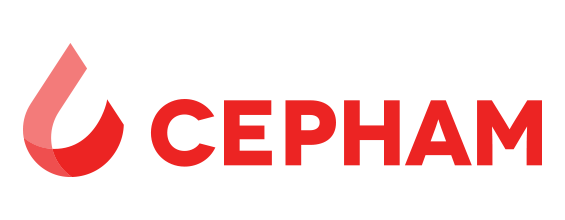Cepham Team just returned from a successful SSG in Las Vegas. SupplySide Global 2025 marked a pivotal transformation in the health and nutrition industry, with healthspan and healthy longevity emerging as the dominant megatrend. The event demonstrated unprecedented convergence between longevity science, GLP-1 metabolic innovations, and AI-powered product development. Here are the top 10 trends we noticed during the show:
1. Healthspan & Longevity Revolution
2. GLP-1 Pharmaceutical Disruption & Opportunity
3. Mental Wellness & Brainergy Convergence
4. Women’s Health Destigmatization
5. Gut-Everything Axis Expansion
6. Natural Colors & Flavors Race to 2026
7. AI Integration Across Value Chain
8. Sustainability from Greenwashing to Business Driver
9. Supply Chain Resilience Through Relationships
10. Delivery Format Revolution
Supply Side Global celebrates what the industry wants to sell (AI personalization, exotic ingredients, novel delivery systems) while consumers desperately need what’s missing: proof that products are real, safe, and work. The conference represents Maslow’s hierarchy inverted – self-actualization without safety and trust.
We have seen this posting by many consumers: “Will this supplement cause me to fail a drug test?” This basic question: whether products contain what labels claim without hidden substances; received no meaningful attention at an event focused on longevity optimization and mushroom extracts. Until the industry addresses these foundational concerns, all innovation builds on quicksand.
Here are the top 10 critical trends that were absent or underrepresented at Supply Side Global 2025:
1. The Consumer Trust Crisis and Transparency Revolt
While the industry celebrates innovation, 90% of consumers want third-party tested products but only 57% can find them. The fundamental breakdown in trust – with 21% of supplements still hiding doses in proprietary blends and 13 of 22 astaxanthin products on Amazon containing zero active ingredient – represents an existential threat the industry isn’t adequately addressing.
2. AI as Consumer Verification Tool, Not Just Personalization
The industry focuses on AI for speedy formulation development, personalization, etc. The consumers are using ChatGPT (400-800 million weekly users) and Perplexity (22 million users) to fact-check supplement claims. 72% of AI users now rely on these tools as their primary product research method – a fundamental shift in how consumers verify industry claims that wasn’t addressed.
3. The Social Media Misinformation Pandemic
TikTok’s 5+ billion supplement-related views drive purchasing but also spread dangerous misinformation (like berberine as “nature’s Ozempic” despite being 18x less effective). The industry hasn’t developed strategies to combat coordinated bot networks, deepfake testimonials, and influencer deception that 82% of dietitians identify as the top threat to nutrition education.
4. Contamination Reality vs. Clean Label Marketing
Organic products, protein powders and some herbal extracts are reported in mass media to contain concerning lead levels. The organic products contain 3x more lead than non-organic. The uncomfortable truth that “cleaner” plant-based and organic products often have higher heavy metal contamination wasn’t discussed in the trade show, exhibitors or in knowledge sessions, despite being a major consumer safety concern.
5. The Counterfeit Product Explosion
Major brands like NOW Foods finding fake products containing only rice flour with thousands of five-star reviews on Amazon represents a barely acknowledged crisis. The industry lacks a coordinated anti-counterfeit strategy while consumers increasingly question if products contain any active ingredients at all.
6. Privacy Backlash Against Genetic Testing
With 36.5% having “a lot” of concern about genetic data privacy and the 23andMe breach affecting 7 million users, the personalized nutrition boom faces a privacy reckoning. Companies claiming perpetual licenses to DNA data while Americans are denied insurance based on genetic tests creates liability the industry isn’t addressing.
7. Generational Trust Collapse
Gen Z shows the highest supplement abstention rate at 31%, demanding proof with each purchase rather than granting brand loyalty. This generation’s skepticism – discovering products 80% via social media but trusting none of it – represents a fundamental shift from Boomer loyalty that conferences aren’t addressing.
8. The “Basic Quality Failure” Crisis
FDA’s most cited violations remain elementary issues – inadequate specifications, invalid testing methods, poor documentation. The industry hasn’t mastered 1990s-level quality control but promotes 2025-level innovation. 19% of B vitamins containing wrong amounts and 30% of multivitamins having quality issues shows foundational problems that innovation can’t fix.
9. Regulatory Fragmentation Accelerating
State-level actions (New York banning sales to minors, multiple states banning tianeptine) move faster than federal oversight. The industry isn’t preparing for a patchwork of state regulations that will make compliance exponentially more complex than current federal-only oversight.
10. Economic Reality of Premium Pricing
While the industry pushes $200-500 personalized solutions, consumers show highest price sensitivity in years, with median supplement spending stuck at $50/month. The disconnect between premium innovation and actual consumer budgets, especially as 27% of Gen X has less than $1,000 savings, isn’t being addressed.

